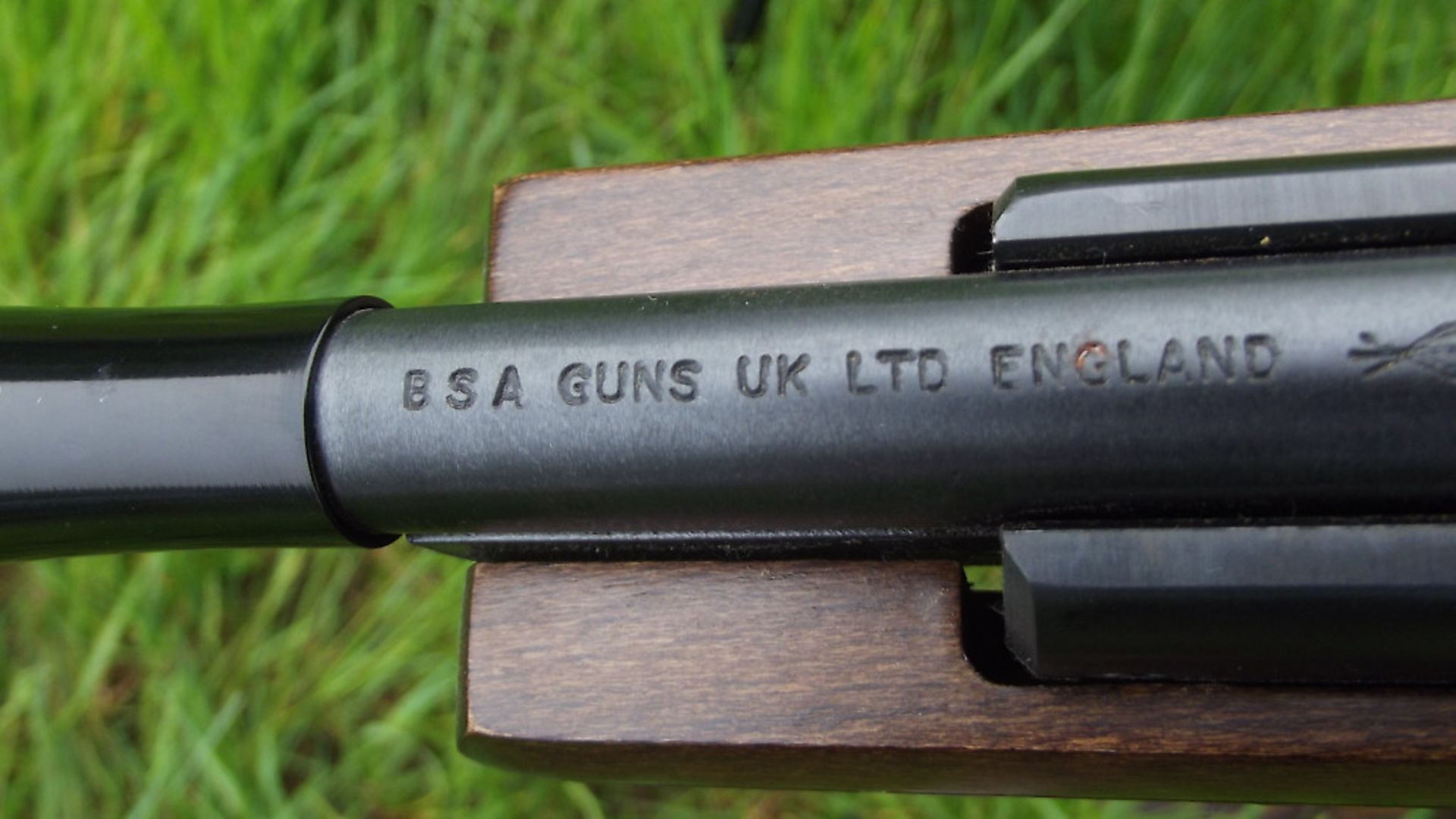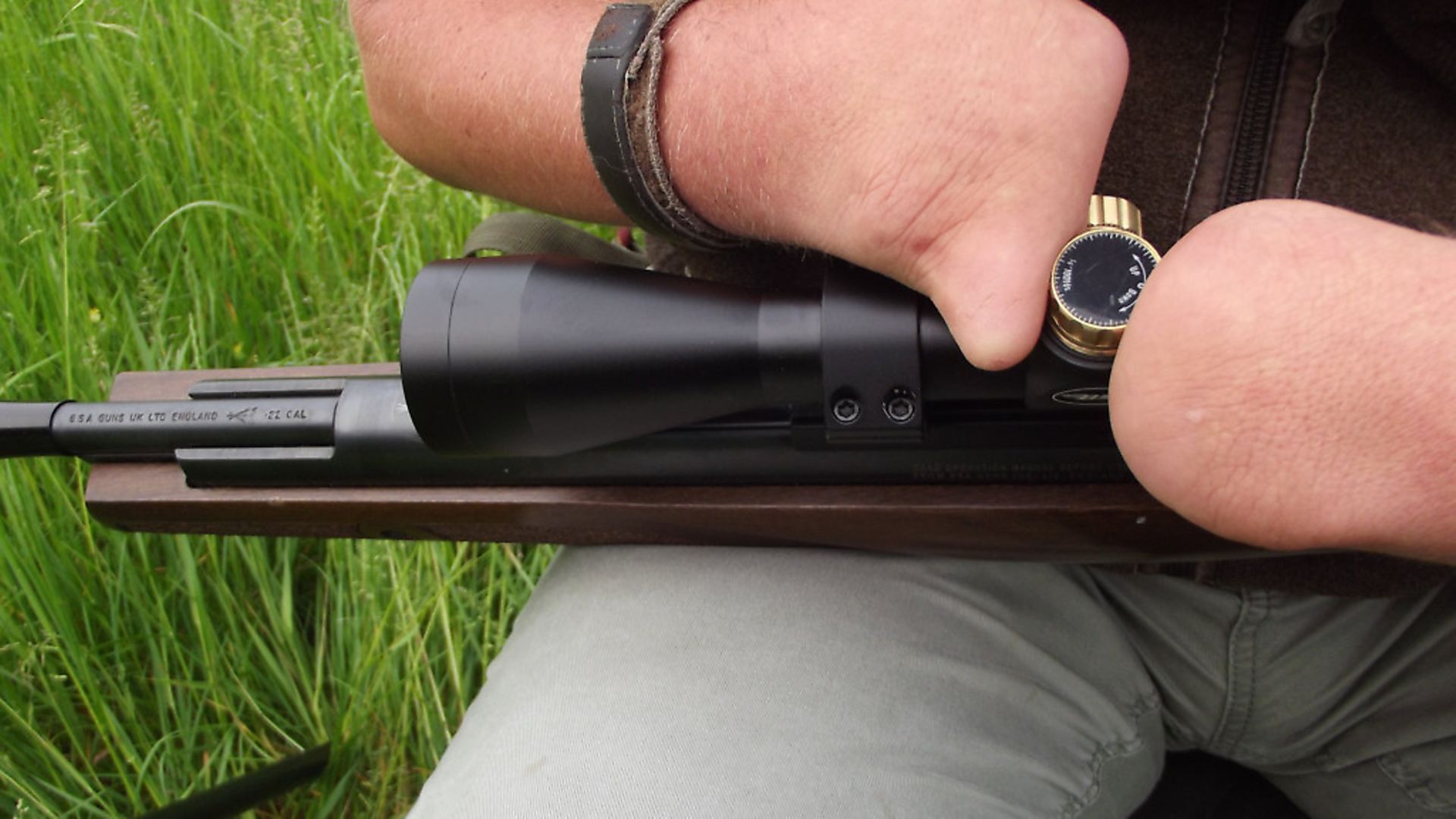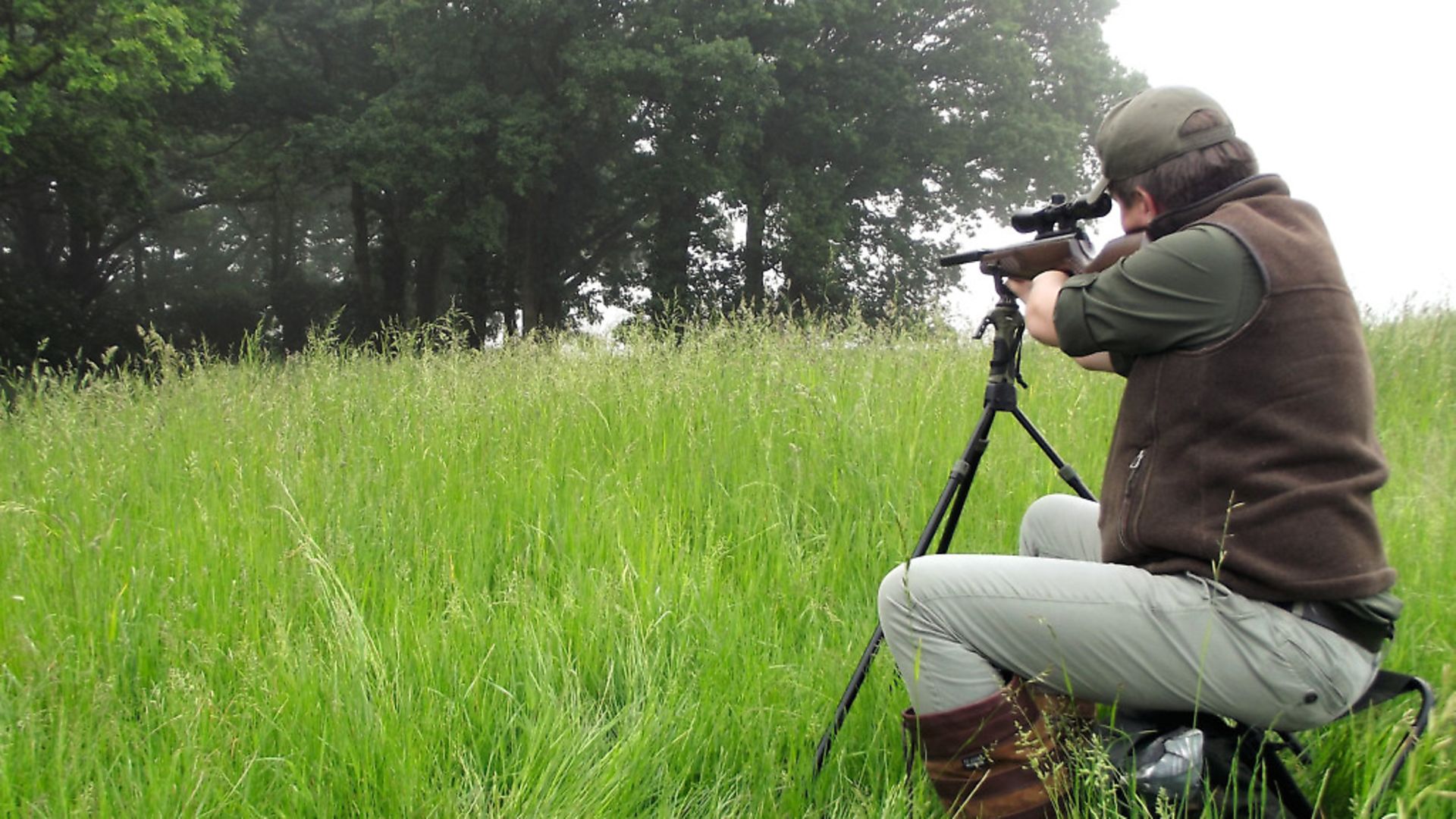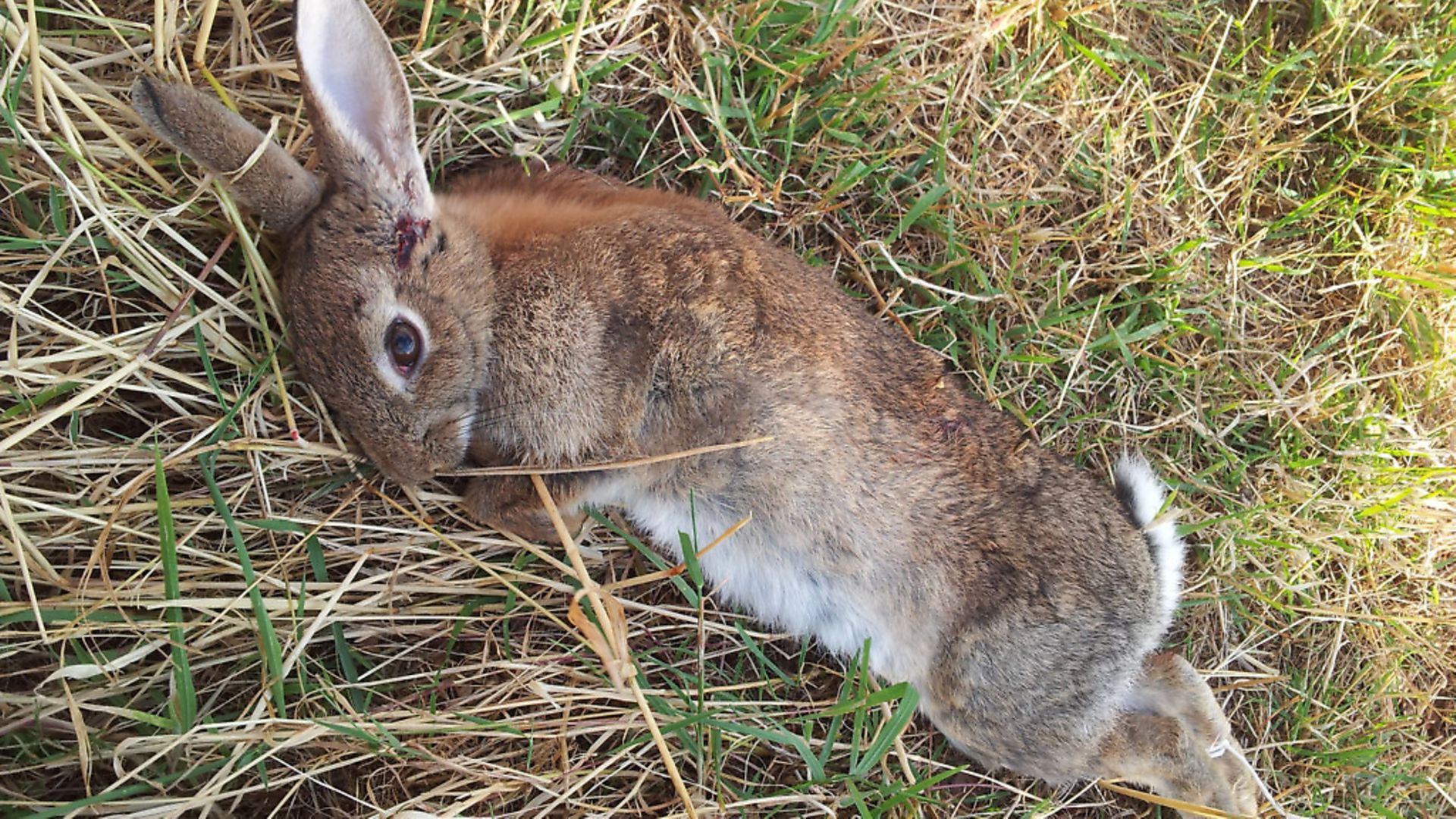Jamie Chandler fits a quiet springer hunt into his busy diary
 credit: Archant
credit: Archant
I was moaning to a friend the other day about the lack of time I have for getting out with the airgun during those ‘golden’ months of April, May and early June, when the weather, daylight, cover height and temperature all come together to give some of the finest opportunities in the year to build mixed bags. My friend remarked that with my apparent charmed work-life pattern and freelance jobs, surely, I was in the perfect position – more than most – to get out and hunt whenever I wanted. Sadly, that isn’t quite true.
As I’m sure I’ve mentioned before, one of my main jobs during the spring and early summer is as a deer-stalking guide, and what started as a way of creating a bit of pin-money, three years ago, has grown significantly. Managing a healthy deer population spread over three sites and 3000 acres has become a real labour of love, much like managing a herd of cows or sheep, but with totally wild animals. On the one hand, it’s an amazing role that I love, taking mostly European clients out stalking roebucks seems like a lovely way to spend a life. On the other, there are so many different factors leading to success or failure in play, that stress can build considerably. Working days start as early as 4am, and end at past 10pm, so my Circadian rhythm is knocked for six; five days – two of reconnaissance and then three of stalking, morning and evening. I require two days rest before I start to feel normal again.
Nature’s harvest
This year, I have up to 18 bucks that can go. On average, one in three stalks produces a safe shot and buck, so that’s 54 stalks over three months. Most clients want morning and afternoon, so that’s about 10 weeks of feeling like I’ve been flying from London to Australia and back. I love the intimate relationship I have with the deer, recognising individuals through their markings, colour or antlers; being out and watching the sunrises and sunsets always different – and meeting a really diverse, and mainly fun group of sportspeople who turn up to stalk. I also love knowing where the meat from the stalks has come from and will go to. The one thing I do have a bit of difficulty reconciling is shooting the deer of which I have built up such a knowledge – that’s why I rarely shoot them myself.
My wife will tell you that she really doesn’t love the sleep-deprived mood swings and short temper that can be an annoying by-product of this incredibly busy time, but it’s an advantage to me, the ever-opportunistic airgun hunter. The other day, I was almost kicked out of the house – after a week of early starts and late finishes, followed by a client cancelling their trip last minute – for not being that excited about differing shades of white paint. I might have suggested where I thought it would look best placed, but it meant that I had a rare bonus of both time and opportunity to get out with the airgun, finally.
 credit: Archant
credit: Archant
Want my springer
I didn’t want to waste a single second of this, literally, once in three weeks opportunity. I thought, ‘If I’m going hunting, then I’m going to get the most out of it for me, my way.’ That meant leaving the PCPs at home and heading out with the BSA Lightning XL SE in .22, with its favourite Air Arms Field Diablo pellets in 5.52 in my pocket.
I have had so many conversations with people about why I still use a spring rifle to hunt with, albeit less than I did 10 years ago, and my answers vary dramatically, depending on my mood; from ‘grab and go’ ease, through appreciation of a simpler time, and ending up near ‘challenge’. That said, a reason that only recently came running to the front of my mind, waving pom-poms like an over-enthusiastic cheerleader, was ‘pure and joyful nostalgia’.
Like many of you, I imagine, I started airgun shooting with my dad teaching me in the garden with a springer – in my case, a BSA Meteor in .22, with a tin of Eley Wasps, when I was really quite young. The warmth of the sun, the smell of my dad’s pipe tobacco, and the excitement of drinking in every word about safety and being grown up, all led to that first, addictive shot. I remember the first time I cocked the Meteor on my own, the upgrade to a BSA Mercury, and finally, after years of practice, to taking live quarry.
 credit: Archant
credit: Archant
Pure hunting
PCPs are amazing feats of clinical precision and ease of use is hard to better, but a springer, for me, is all about pure hunting; they’re a one-shot, one for the pot, deadly accurate marvel of engineering. Coupled with the joy of reminiscing about childhood, for pure hunting pleasure, they simply can’t be beaten.
Having not been out for weeks, I started at my make-shift range, zeroing, checking the Lightning and then shooting seated, off my knee, out to 35 yards. Before I knew it, two hours had passed and it was time to get out after a pot filler.
One advantage of spending so much time reconnoitring deer movements is acquiring a very good idea of what time smaller game – in this case, pot-sized rabbits – are also about, and I knew that in the spot I was heading for, three or four would be appearing half an hour before sundown and heading straight into the barley from the field margin.
I arrived at the headland and started my way down the margin with the intention of pushing myself back into the hedge to offer concealment, and ambushing anything that came out in front. It was a plan that had worked before plenty of times. Sadly, this time the grass had grown too high and thick to offer a clear shot through to anything more than a couple of yards ahead. Instead, I moved out to the edge of the crop, moving low, as slowly and as quietly as I could, to get in on any opportunities that presented themselves, stopping every 10 steps to look forward. From a nick in an otherwise straight crop line, I saw what looked like the tip of an ear about 45 yards away. I froze and ‘pinged’ the area with my rangefinder, using it partly as a monocular. Sure enough, a healthy buck was sitting on alert, looking around for danger. I crouched, froze and waited in the mud until pins and needles set in, then checked again and the buck was head down, eating. At a snail’s pace, I moved the further 10 yards forward.
 credit: Archant
credit: Archant
A gentle nudge
There was barely a wisp of wind, and confident after my range time, I gently sat down and bought the Lightning to my shoulder. I made a squeak and the rabbit’s head appeared, looking first left, then right, then left – then it froze, sniffing the air. I flicked the safety and gently squeezed the trigger, feeling a gentle nudge as the Lightning sent a pellet with pin-point accuracy straight to the rabbit’s head, a perfect shot as six other unspotted rabbits nearby charged back to the hedge.
I moved forward, claimed my hard-won dinner with glee, then moronically committed the cardinal sin of checking my phone. A client wanted to move his stalking day forward to the next day, or ‘in about three hours sleep by the time I got to bed’. Still, refreshed and revitalised I set off for home, looking forward to my next escape.
__________________________________________________
Read more from Jamie Chandler...
Does the size of the bag define our enjoyment of the hunt?
Are you shooting from the right range?
Pigeon shooting with a new permission